The Maclean’s 2014 Power List: Top 15
Ready or not, here’s the final reveal of our annual Power List
Share
This is Part 3 of the Maclean’s 2014 Power List. To view the rest of the entries on our list of Canada’s 50 most important people, click here for Part 1, and here for Part 2.
This year’s Power List—the second annual compilation by Maclean’s writers and editors of this unapologetically subjective ranking—highlights the clout of a truly diverse selection of 50 influential Canadians. Our list ranges from household names to: who’s that? Pinnacle corporate predators rub shoulders here with non-profit paragons. To help you understand how we picked them, you’ll see, beside each name, three icons. This is the final reveal of our Power List: the 15 most powerful people in Canada.
Once you’ve seen them, voice your opinion. Are you annoyed by our choices? Angered by our omissions? We invite you to write in our comments, tweet at us, or join us on Facebook to offer your own powerful case for a different list.
This symbol indicates our weighting of the individual’s institutional standing. No surprise that the newly named head of Canada’s biggest bank ranks the maximum five. On the other hand, while we detect serious power in the creative clout of a certain movie director, he doesn’t head a studio or produce his own films, so we award him only a single blue pillar icon.
This tells you how much timing mattered in our choice of a given individual, based on the way things look to us in late 2014. Power expresses itself, after all, through the tasks of the moment. You won’t have to read very far into our list to see that we recognize the pressing priority of the Ebola challenge: Five clocks to a doctor near the centre of the crisis. The same principle works in reverse: Names from sports that made our 2013 list because we were looking ahead to the 2014 Winter Olympics in Russia have fallen off entirely.
The power that flows from great ideas is perhaps the most appealing kind. So we enjoy awarding multiple light bulbs to, as you’ll see, a university resident with new notions about linking academia to the community, or a young doc with new ways of thinking about the health of old folks.
Maclean’s 2014 Power List: The 15 most powerful Canadians
- 15. Kirstine Stewart
- 14. Gerry Butts
- 13. Justin Trudeau
- 12. John Tory
- 11. Kathleen Wynne
- 10. Philippe Couillard
- 9. Jenni Byrne
- 8. Bob Paulson
- 7. Bharat Masrani
- 6. Guy A. Lepage
- 5. Janice Charette
- 4. Beverley McLachlin
- 3. Mark Wiseman
- 2. Joanne Liu
- 1. Stephen Harper
#15: Kirstine Stewart
A little bird told us
![]()
![]()
![]()

Usually, 32,000 Twitter followers don’t scream “power,” especially when you compare those numbers to the likes of Drake’s 17.9 million followers or even Toronto’s Drake Hotel (no relation to the rap star), which has 57,000. But Kirstine Stewart’s influence doesn’t come from the updates in her Twitter stream. It is her role as Twitter’s VP of North American media, where she is developing partnerships for the social media network among the TV, sports and music industries, that makes her one of Canada’s most high-profile businesspeople. Once the rising star of the television world, Stewart was behind some of the CBC’s best original shows, including Dragons’ Den, Republic of Doyle and Battle of the Blades. By 2011, she was appointed executive vice-president of CBC’s English-language services and, shortly thereafter, she married Zaib Shaikh, the star of Little Mosque on the Prairie. Then came a tweet from Adam Bain, Twitter’s president of global revenue, announcing Stewart as the new head of Twitter Canada. Her recent promotion is further proof she’s on a singular upward trajectory. Come spring, she’ll publish her first book, Our Turn: Time for a New Kind of Leader. So how high can Stewart fly? Years ago, the story goes, when she was a young TV sales exec, she visited a fortune teller in Hong Kong, who told her she would one day become the prime minister of Canada. Obviously, that has not happened. Yet. — Aaron Hutchins
#14: Gerry Butts
Friendship on the way up
![]()
![]()
![]()
 |
There is an old photo of Gerry Butts and Justin Trudeau in their younger days that has made its way into the public domain—Trudeau in a sleeveless shirt, jeans and sandals; Butts in ripped jeans, sandals, a silly hat and long hair. It’s not simply funny in that way that all old photos highlight younger versions of ourselves and dated fashion choices—it’s also a reminder of the history Trudeau and his closest confidant share. Butts is now the most prominent (he’s a frequent and assertive tweeter) and powerful of a coterie of advisers around Trudeau that could form the basis of the next Prime Minister’s Office—provided they can seal the deal with an electorate that has at least shown an openness to the idea of Trudeau becoming prime minister. The former university mates are standing on the doorstep of our highest elected office, an achievement that would make political legends of them both. — Aaron Wherry
#13. Justin Trudeau
Float like a butterfly, sting like a bee
![]()
![]()
![]()
 |
The Liberals have led the other parties in national polls every month since Justin Trudeau became their leader. He draws the sort of fevered crowds you more often encounter at rock concerts. Stephen Harper almost never mentions Tom Mulcair in speeches, but he fairly snarls Trudeau’s name. Canadian politics in 2014 seemed like an endless referendum, not on anything Trudeau proposed, but on the very notion of him.
Now comes the hard part. Trudeau has a knack for saying outrageous things—like turning the Canadian Forces’ CF-18 fleet into a phallic symbol—and his seemed-like-a-good-idea-at-the-time snap decisions have led him to eject every Liberal senator and two MPs from his caucus. It’s hard to build a bigger tent with a smaller army. But he’s recruiting smart young Liberal candidates in a lot of ridings. The Liberal palace guard just logged a persuasive victory in Ontario for Kathleen Wynne. Trudeau’s like the old urban myth of the bumblebee: theoretically he can’t fly, and yet there he is. — Paul Wells
#12. John Tory
A chance to rebuild
![]()
![]()
![]()
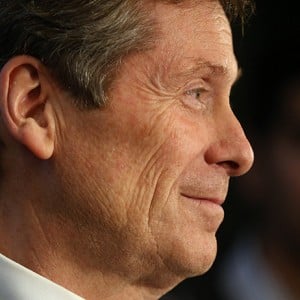 |
Seldom has a politician revelled in post-election bliss like John Tory. In the days after Toronto’s Oct. 27 municipal election, the mayor-elect seemed to be everywhere, brushing cows at the Royal Winter Fair, or personally delivering mousetraps to the rodent-infested City Hall press gallery (while managing, somehow, to forgo the obvious joke). You can forgive the man his honeymoon: After three failed electoral races, Tory’s need for a win had reached crisis proportions.
This one was transformative, vaulting the 60-year-old overnight from lovable loser to political powerhouse. In shutting the door on the traumatizing Rob Ford era, Tory has roughed in an electoral bridge between Toronto’s downtown and its increasingly alienated suburbs, where Rob and Doug Ford had built a formidable support base. To be sure, it’s a shaky construct: Doug, who replaced his cancer-stricken brother on the ballot on Sept. 12, edged out Tory in two of the city’s three inner suburbs. But if Tory can keep Toronto united, he will be poised to restore the city to its place among the country’s most influential urban centres, leading the collective drive for improvements to transportation, economic activity and social services.
That’s a good thing—hard as it might be for other Canadians to admit. In the tumult of the Ford era, Toronto had been eclipsed by Vancouver and Calgary among cities embracing their growing economic and cultural importance, and its voice was missed. Yet the country’s largest city remains its undisputed financial hub, more so now that falling oil prices have Calgary on edge. And it’s hard to imagine a figure better equipped than Tory to harness Toronto’s energy. His experience in local corporate, media, political and non-profit circles yielded strong connections to players whose help he’ll need to advance its agenda. His reputed gift for persuasion can break down the barriers that stymied hard-headed Rob Ford. Shortly after Tory’s election, for instance, Toronto Police Chief Bill Blair softened his long-standing resistance to cutting the city’s bloated police budget.
More seems possible thanks to a well-run campaign, in which Tory sidestepped the sort of landmines that in the past called his judgment into question. And while enormous challenges remain—Toronto remains beset by traffic gridlock, swelling poverty and hare-brained council decisions—the man wearing the chain of office has promised to bring back the city once “known as a beacon of respect for everybody.” For the first time in a long while, it seems possible to believe. — Charlie Gillis
#11. Kathleen Wynne



#10. Philippe Couillard



Central Canada’s power couple
 |
A year ago Kathleen Wynne seemed the caretaker premier of a doomed Liberal government, and the Quebec oddsmakers would have given Philippe Couillard less-than-even odds of defeating the Parti Québécois after only one short term. But now the two hold solid majorities, and as they looked around and tried to understand how they managed it, each noticed the other—and found a kindred spirit.
Neither is much of a showboat. Each has senior cabinet-level experience in a predecessor’s government, but neither seems like a political natural. Each inherited a fiscal mess, which will require belt-tightening measures that will make it hard to maintain the popularity they enjoyed for a few weeks after their elections.
They bonded in a Toronto meeting before this August’s annual premiers’ conference in Charlottetown. At that broader conference, their common front was remarkable, and it bore quick fruit. Quebec returned as a full participant in a health care innovation working group the premiers are running, after 18 months of a PQ boycott. And the premiers’ final communiqué matched Wynne’s and Couillard’s wish list: calls for more infrastructure funding and a formula for increasing health care funding to account for aging populations.
“They really are quite compatible,” an aide to Wynne said. Each premier lauded the other’s abilities in separate interviews. Each has good reason to need a friend. Wynne campaigned against Prime Minister Stephen Harper’s refusal to enhance the Canada Pension Plan as much as she did against her provincial opponents. He took it personally, and the two don’t talk. Couillard gets along quite well with Harper. His problem is closer to home, among his own electorate: the Quebec economy has stalled alarmingly since the spring, forcing painful decisions on spending cuts that have swiftly burned away the Couillard government’s popularity.
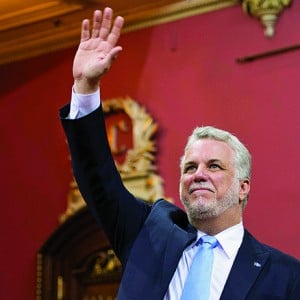 Fortunately for Couillard, the opposition parties are in a state of disarray that gives him some time to achieve and demonstrate results. He handed the Parti Québécois its worst thumping in 44 years, and the shattered party has a long and divisive leadership campaign ahead of it. (If Couillard’s luck holds out, the PQ will pick newspaper tycoon Pierre Karl Peladeau as their leader, a man with wafer-thin political experience whose blue-blood values clash with just about everything the social-democratic PQ holds dear.) The third party, François Legault’s Coalition Avenir Québec, leads the PQ in most polls these days, but it can’t manage to convey the impression that it’s a real party, instead of just Legault’s personal one-man show.
Fortunately for Couillard, the opposition parties are in a state of disarray that gives him some time to achieve and demonstrate results. He handed the Parti Québécois its worst thumping in 44 years, and the shattered party has a long and divisive leadership campaign ahead of it. (If Couillard’s luck holds out, the PQ will pick newspaper tycoon Pierre Karl Peladeau as their leader, a man with wafer-thin political experience whose blue-blood values clash with just about everything the social-democratic PQ holds dear.) The third party, François Legault’s Coalition Avenir Québec, leads the PQ in most polls these days, but it can’t manage to convey the impression that it’s a real party, instead of just Legault’s personal one-man show.
Wynne’s luck is more direct: the manufacturing regions of Ontario have surprised everyone by leading Canadian job growth in the last two months, with nearly 62,000 out of 117,000 jobs created Canada-wide.
These days, Ontario and Quebec cabinet ministers frequently confer with each other first before making moves outside their home provinces. The Wynne-Couillard power couple has fast become an effective counterweight to the so-called “big shift” that had been seeing populations, money, job and political power moving westward within Confederation. And because these two majority governments still have more than three years left before they face voters again in election campaigns, they are able to plan that long-time horizon together.
Any premier’s first priority is to put out fires at home; alliances abroad, even as far as the next province over, take a back seat. But this alliance between Wynne and Couillard is conscious and acknowledged by both. “It’s time to put Central Canada back at the centre of the map,” Couillard told reporters during an Ontario visit in October.
There’s one more reason why Couillard and Wynne will continue to have clout heading into 2015. Between them, their two provinces hold nearly 200 federal seats. Dozens of those seats have bounced from party to party in recent years and could do so again in the federal election next October. That means every federal leader will want to deliver on Ontario and Quebec priorities. For two provincial Liberal leaders whose future looked decidedly shaky only a year ago, today’s future looks bright. — Paul Wells
#9. Jenni Byrne
Fought and conquered
![]()
![]()
![]()
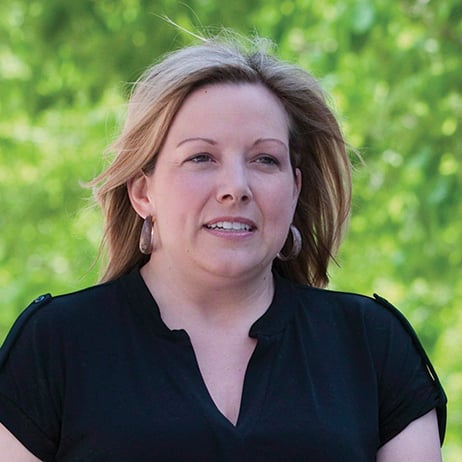 |
On her right arm, Jenni Byrne has a tattoo of the traditional Byrne clan motto: Certavi et vici. In case your Latin is a little rusty, that translates as, “I have fought and conquered.” Her familial claim to that boast aside, Byrne has the political record to justify the ink. As the Conservative party’s director of political operations, deputy campaign manager for the Conservatives in 2008 and campaign manager in 2011, Byrne helped the party not only twice repeat the victory of 2006, but build to its current majority mandate. She joined the Reform party at the age of 16 and has been touted as a tough but astute organizer with an understanding of the party base. Now a deputy chief of staff in the Prime Minister’s Office, she has again been asked to run the 2015 campaign. But the fight next year will be the hardest to date—re-election requiring Byrne & Co. to conquer a polling deficit, voter fatigue and history (not since Wilfrid Laurier’s Liberals has a party won four consecutive elections with the same leader). — Aaron Wherry
#8. Bob Paulson
Command in testing times
![]()
![]()
![]()
 |
It was the Oct. 22 shootings at the National War Memorial and then in the Parliament Buildings that prompted many Canadians to focus on the RCMP commissioner for the first time. Poised, fluently bilingual, willing to inject his own opinions into the usual cautious cop verbiage, Bob Paulson, 56, proved to be a commanding presence on a chaotic day. As the government moves to expand the RCMP’s anti-terrorism powers in the aftermath, Paulson will have to assuage concerns about any erosion of civil liberties. This won’t be the first delicate task he has taken on since being appointed the top Mountie in 2011. He was in the political spotlight earlier this year over his force’s finding that Prime Minister Stephen Harper’s former chief of staff, Nigel Wright, didn’t break any laws by giving $90,000 to then-senator Mike Duffy. At Duffy’s trial, set for next spring, the work of Paulson’s investigators is bound to come under closer scrutiny. — John Geddes
#7. Bharat Masrani
Steady as he goes
![]()
![]()
![]()
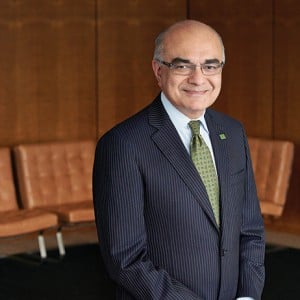 |
Measured by total assets, Toronto-Dominion Bank is now the country’s largest bank (having overtaken Royal Bank of Canada this year) and is well on its way to becoming Canada’s first trillion-dollar financial institution. That alone gives Bharat Masrani, TD’s new CEO, immense influence over the economy. Born in Uganda to Indian parents, raised and trained in the U.K., and boasting deep experience in the U.S. and Canada, Masrani’s resumé befits the modern and complex world of banking. He’s indicated he will be outspoken on economic and policy issues, just as his mentor and predecessor Ed Clark often weighed in on the housing market and indebted households. As with any new bank CEO—this year alone four of the Big Five got new chiefs—it will take time for Masrani to define his tenure, but he’s hinted at the direction he’ll take: steady as it goes internal growth rather than big-ticket acquisitions. Whatever brings in the billions. — Jason Kirby
#6. Guy A. Lepage
The king of coaxing
![]()
![]()
![]()
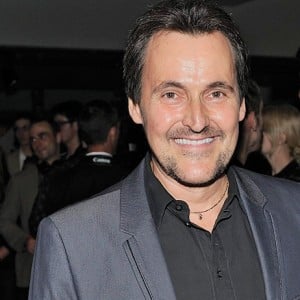 |
Guy A. Lepage’s TV talk show, Tout le monde en parle, landed firmly on English Canada’s radar last fall when Montreal Canadiens defenceman P.K. Subban shared his tactic for throwing the opposing team off its game: farting in front of the net. With more than a million francophone viewers, it wasn’t the first time Lepage’s top-rated Radio-Canada program, modelled on a French show of the same name, made waves outside Quebec. Jack Layton’s affable appearances, cane in hand, paved the way for the NDP’s Orange Wave in the 2011 federal election. Justin Trudeau, meanwhile, was ridiculed earlier this year after joking to Lepage about Russia’s invasion of Ukraine, blaming a “bad mood” after Russia failed to win an Olympic hockey medal at Sochi. Given his propensity to coax newsworthy comments from people trained to do otherwise, Lepage is a media personality Canadians can ill afford to ignore, regardless of which official language they speak. — Chris Sorensen
#5. Janice Charette
A mandarin among hyper-partisans
![]()
![]()
![]()
 |
Like all the mandarins before her who scrabbled their way to the federal bureaucracy’s top job, Janice Charette is routinely described as an “Ottawa insider.” The Privy Council Clerk has to be, of course, but there’s more to her than that. Since 2010, Charette has worked closely with Prime Minister Stephen Harper and his cabinet. So, unlike the two previous clerks, with neither of whom Harper had much history before they became his most senior bureaucratic advisers, in Charette he picked a senior bureaucratic adviser he already knew well. Her CV includes a string of the expected top public service posts, but also stints as a political aide: She was Jean Charest’s chief of staff from 1997-98 when he was the leader of the old Progressive Conservatives. That was a long time ago, and Charette is viewed as properly neutral now, but her old experience in party politics might have left her with useful insights for navigating power circles in today’s hyper-partisan Ottawa. — John Geddes
#4. Beverley McLachlin
Unruffled justice
![]()
![]()
![]()
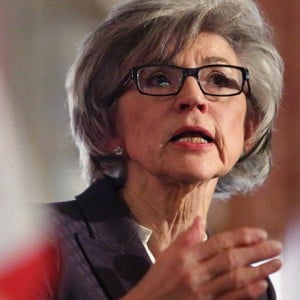 |
Beverley McLachlin, 71, is the longest-serving chief justice in the Supreme Court of Canada’s history. The established hallmarks of her leadership: a less fractious bench, more open to outsiders. Yet dramatic events have revealed new facets of her style. After the court rejected Stephen Harper’s choice of Marc Nadon to join its ranks early this year—on grounds that Nadon wasn’t eligible, as a federal court judge, to fill a Quebec vacancy—the Prime Minister’s Office lashed out at McLachlin. In public, at least, she was unruffled: “There’s always going to be tensions here and there, but it is part of the process.”
The court’s biggest decision next year could be on assisted suicide, on which McLachlin’s long tenure comes into play. She is the only judge still on the court who was sitting the last time the issue came before it—in the 1993 Sue Rodrigues case. Back then, the majority ruled against allowing assisted suicide. McLachlin wrote for the minority that would have allowed it. — John Geddes
#3. Mark Wiseman
Your money, his genius
![]()
![]()
![]()
 |
As the president and CEO of the Canada Pension Plan Investment Board, Mark Wiseman has more direct responsibility than anybody over the retirement incomes of millions of Canadians. At the time of the board’s most recent quarterly report, he was overseeing CPP assets worth a cool $234.4 billion. One indicator of how shrewdly he invests that national nest egg is the lack of debate surrounding the CPP’s soundness—even when just about every other aspect of the way Canadians save for retirement is up for argument. And Wiseman isn’t just some cautious money manager on a massive scale. Among his recent buys: a 39 per cent stake in a Brussels-based parking-lot company operating in 350 cities. His aim is a “globally diversified, resilient portfolio.” How’s he doing so far? Well, for the 2013-14 financial year, the CPP board posted a 16.5 per cent annual return. How’d your RSP do last year? That’s why Wiseman is so powerful. — John Geddes
#2. Joanne Liu
Speaking unspeakable truths
![]()
![]()
![]()
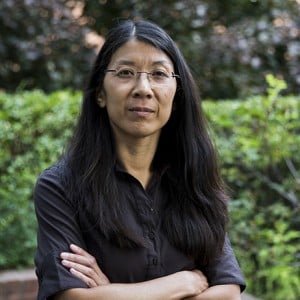 |
There’s much to be said for plain language, and at the worst of times it becomes essential—something Joanne Liu grasped last fall as the death toll in West Africa began to soar. “Today, Ebola is winning,” declared the international president of Doctors Without Borders (Médecins Sans Frontières) at a high-level UN meeting on Sept. 25. “Our 150-bed facility in Monrovia [Liberia] opens for just 30 minutes each morning. Only a few people are admitted—to fill beds made empty by those who died overnight. The sick continue to be turned away, only to return home and spread the virus among loved ones and neighbours.”
It was a searing portrait of an epidemiological disaster, issued by a physician with scant time for diplomatic niceties. The 49-year-old pediatric emergency physician from Quebec City took the helm at MSF six months before the Ebola outbreak in West Africa. As her teams fanned out last summer across the afflicted areas, she realized that her idealistic non-profit organization was the only bulwark against a deadly and fast-moving pathogen. The affected countries—Guinea, Liberia, Sierra Leone—lacked the money or health care infrastructure to mount an adequate response. Western governments let the crisis slide, apparently on the belief the outbreak would peter out.
Throughout the disaster, Liu has proven a passionate yet decisive leader. By early fall, MSF had deployed nearly 250 international staff to affected communities, hiring and training 2,800 local people in the unwieldy methods of treating Ebola. Meanwhile, Liu put the screws to inert foreign governments—fearlessly giving voice to unspeakable truths. “I’ve never had to build a crematorium in the middle of my mission and burn 100 bodies in the same day,” she told Maclean’s in October. “All my teams are telling us it is hell on Earth right now.”
At times, it seemed as though her frustration was getting the best of her, as in early October, when the international media shifted its lens from Africa to Dallas and the first Ebola case to arrive in North America. “We must stop focusing on hypothetical cases in Canada and the U.S.,” Liu told her hometown newspaper, Le Soleil. “Our means are light years away from those in Liberia. The patient has been quarantined and there will be a hundred caregivers around him. The chain of transmission will stop with that person.” It came off as callous: The infected man, Thomas Duncan, ultimately died. But it was hard to argue with Liu’s logic. Why should one case in Texas supersede the catastrophe in West Africa, where 5,000 had died and thousands of new cases were appearing each week?
Liu comes by her toughness honestly. As one of few Asians in Quebec’s capital in the 1970s (her family owned a Chinese restaurant), Liu withstood racist taunting in her early school years but persevered to become one of the brightest lights at McGill University’s medical school. She took her first overseas aid trip at 18, got her specialty in pediatric emergency care at New York University and joined MSF in 1996. Today, she ranks alongside fellow Canadian Margaret Chan, head of the World Health Organization, as one of most influential voices in international aid. And those sluggish governments are finally listening. As of this writing, they had kicked in nearly $400 million to battle Ebola, money Liu said must be “translated into immediate action.” — Charlie Gillis
#1. Stephen Harper
Fourth time lucky?
![]()
![]()
![]()
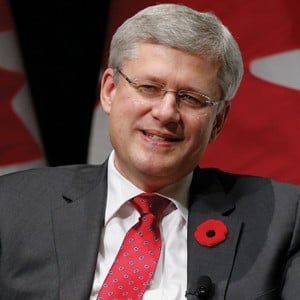 |
Maybe he’ll just be prime minister forever. In 2015 he will still be three years younger than Jean Chrétien was when the Liberal politician won the first of three consecutive majorities. But you hear more pundits betting on Harper’s downfall than on his triumph.
He ignores them. When’s the last time the conventional wisdom bet on Stephen Harper? Not in 2006, when the leader, then deemed to be devoid of charisma, first ascended to power by beating Paul Martin to form a minority government. And not even as recently as 2013, when Mike Duffy was hanging around his neck like the world’s biggest albatross, a popular bet in the Bytown saloons was that Harper would quit before Labour Day. Instead, as 2014 closes, the Commons debates are about whether his tax cuts are deep enough, universal enough, generous enough. That’s the kind of debate Harper has prayed for.
Winning a fourth consecutive election would be incredibly difficult. But he’ll go into the next campaign with the federal budget balanced and, he hopes, the bloom off Justin Trudeau’s rose. He has always sought to run as the sensible incumbent against reckless sorcerers’ apprentices. Within that frame, small surpluses are useful: there’s not enough money in the kitty to pay for Liberal-sized or NDP-sized ambitions. “Don’t vote for big spenders” is not a message to stir the heart.
But he doesn’t need to stir the heart. He needs to win. Only two other men have won four consecutive elections: John A. Macdonald and Wilfrid Laurier. Even Harper’s own supporters might blanche at the notion that he should rank in their company. But you count this guy out at your peril. — Paul Wells
